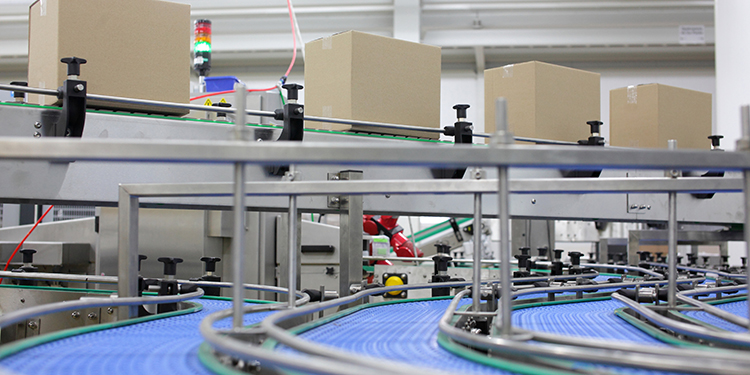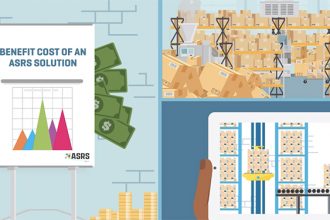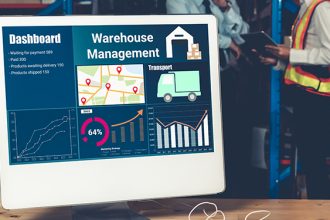Managing Growth: How Conveyor And Sortation Systems Reduce Waste And Increase Productivity

Increasing volumes, product assortments, throughputs, and customer demands are great problems to have — until it becomes operationally overwhelming. One approach to helping operations manage rampant growth is to consider implementing conveyor and sortation systems, which reduce waste and increase productivity in a variety of ways (as detailed in a video produced by the members of the Conveyors and Sortation Systems (CSS) Industry Group of MHI, “The Importance of Conveyor and Sortation Systems for Controlled Growth.”
How Conveyors and Sorters Reduce Waste
Maximize Available Space: Warehouse square footage is expensive, meaning operations want to use as much of it as efficiently as possible. Yet typical distribution center designs must include ample aisle space to accommodate personnel and motorized equipment — such as forklifts — to ensure adequate clearance for safe turns and load handling. Conveyors and sorters take up far less floor space and can be implemented overhead, making use of the building’s cube for even greater facility utilization. This, in turn, can increase an operation’s overall profit margin by freeing up aisles previously used for travel for conversion into storage or value-added processing zones.
Reduced Number of Accidents and Injuries: The fixed location of sorters and conveyors increases safety, as barriers can be erected and/or safety sensors implemented to prevent personnel from coming into contact with the equipment. Additionally, these automated systems transfer materials in a predictable manner, unlike human-driven motorized vehicles, eliminating the risk of a collision with personnel, building structures, or other equipment. Further, conveyor and sortation systems handle the heavy lifting and repetitive motions associated with manual selection and transport of items, preventing ergonomic injuries. A reduction in the number of accidents also cuts insurance and worker’s compensation costs.
Minimize Lost or Damaged Goods: Humans make mistakes, meaning an associate might deliver an item or pallet of goods to the wrong area or zone; further, they may drop or otherwise damage products accidentally, creating waste. Automated conveyor and sortation systems deliver consistent, repeatable performance. Through the use of scanners and automatic identification and data collection systems implemented with conveyors and sorters, real-time documentation can be created to track the location and contents of each tote, pallet, or parcel as it moves through the facility.
How Conveyors and Sorters Increase Productivity
Improved Material Flow: Because conveyors and sortation systems operate smoothly, consistently, and predictably, they keep product moving throughout an operation in a timely manner. These automated solutions don’t take lunch breaks, nor do they deviate from a designated path. This ensures that products are routed to and from designated areas without delay, preventing handling errors or mistakes and enhancing throughput.
Safety Through Predictability: Unlike operator-driven motorized vehicles, such as forklifts, automated conveyor and sortation systems are fixed systems that operate at consistent speeds. Their use minimizes (or eliminates) the unpredictable traffic of large manned vehicles traveling throughout an operation. Further, automated conveyor and sortation systems can be outfitted with a variety of safety devices that keep workers safe. In addition, the potential hazards associated with an automated system are generally consistent. This means these hazards can be identified, minimized, and marked before the system is designed or deployed.
Energy Efficiency: Today’s conveyor and sortation systems are becoming far more efficient, employing drive and motors that draw less power than ever before. To meet operations’ sustainability mandates and cut their energy bills, conveyor and sortation system designers are moving away from induction motors in favor of permanent magnet AC (PMAC) motors. These motors offer greater efficiency than induction motors because they avoid the energy losses that result from a current being induced in the rotor to create a magnetic coupling between the rotor and stator. Powered by a more energy efficient motor means today’s conveyors and sorters also reduce the cost per item handled.
Reduction of Downtime: The automated operation of conveyor and sortation systems is far less dependent on the number (or productivity) of human workers on site on any given day than in manual operations. Assuming the system is functioning properly, conveyors and sorters can run 24/7 with minimal physical interaction needed. This means an operation can run with fewer employees, allowing workers to be allocated to more value-added tasks. Should the system develop an error or fault, detailed diagnosis information can be displayed to operators via a human interface machine (HMI); the same information can be shared via an Internet of Things (IoT) platform to the operations’ lead engineers and/or the original equipment manufacturer (OEM) for remote support and faster resolution of the issue.
Want to learn more about how conveyor and sortation systems can help your operation better manage growth? Watch the CSS video.



